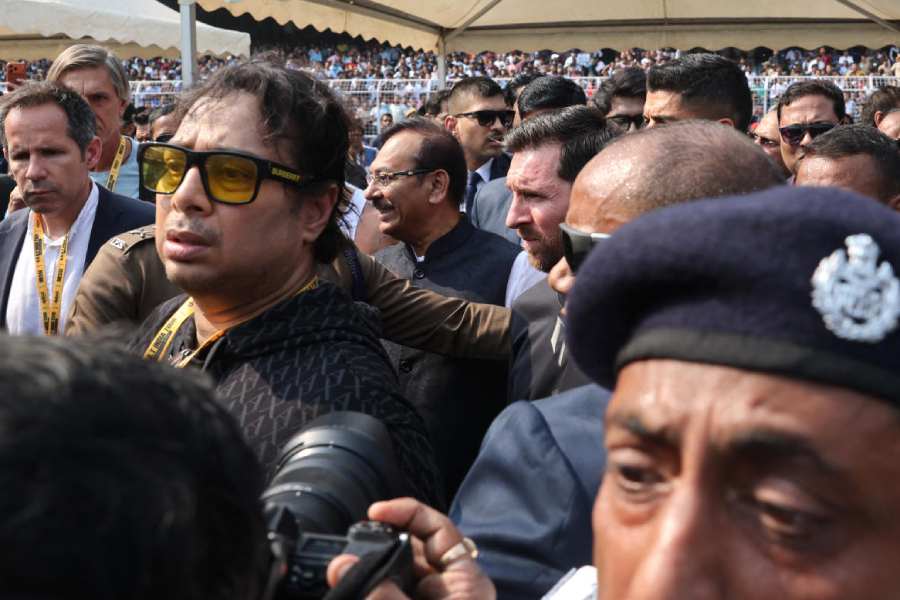 |
The Americans have it. The Europeans have it. And now finally, we Indians have it too! I’m talking about the new Honda Civic that has just been launched in India. What we’ve got is the American version, which comes with a boot attached to the rear. True, it’s not as sexy as the bold and dramatic-looking European version, but it is Honda’s latest Civic ? the eighth generation model in fact, launched in Germany last year at the Frankfurt Motor Show.
The Civic, which comes in both manual and automatic versions, fits between the City and the Accord in Honda’s range for India. I’d earlier speculated that the price would be between Rs 10 lakh and Rs 12 lakh, but Honda has done better by pricing the manual version at Rs 9.75 lakh and the auto version at Rs 10.45 lakh. That puts it into the slot that connects to both the Upper C and Lower D categories, which is Toyota Corolla, Skoda Octavia and Mitsubishi Lancer Cedia country. Those prices are with 68 per cent localisation of parts currently which Honda hopes to push up to 80 per cent within a couple of years.
 |
Honda introduced the Civic in 1973 with what was new technology at the time ? a CVCC (Compound Vortex Controlled Combustion) engine. As mentioned earlier, this eighth-generation Civic is based on the American version but unlike the Yanks who get a 140BHP 16-valve iVTEC engine, Indians have to settle for an engine that is 10BHP down on power. It’s all because of having to achieve better fuel economy in a poor, developing country where people should not ever enjoy driving, I suppose. Also, because the fuel quality is not up to the mark. Which means one can only dream about the Si coupe version that has a 2.0-litre i-VTEC engine developing 197bhp of power or the R-Type, which needs 100 Octane fuel to run.
While in profile the Civic looks the same as the American version, including the sporty Camaro-style rear lip on the boot, Honda has given the Indian version a different look both in front and at the rear. The headlights are not horizontal slashes but have a curvature on the bottom edge while the bumper has a rather sporty look with extra intake-like areas on either side of the central intake. At the rear, according to Honda, the tail-lights have been designed to resemble the afterburners of jet fighters. In what is like a throwback to HM’s venerable Ambassador, the wiper blades act in opposed directions.
The Civic rides on 15x6J alloys and 195/65 R15 tubeless tyres and retardation is effected by ventilated disc brakes at front, and solid discs at the rear. It has dimensions of 4545mm (length) x 1750mm (width) x 1450mm (height) and a wheel base measuring 2700mm. The manual version has a kerb weight of 1210 while the autobox version weighs 1240kg. Compare that to 4525mm and 1725mm for the Elantra, 4480mm and 1695mm for the Cedia, 4507mm and 1731mm for the petrol Octavia Rider as well as 4530mm and 1705mm for the Toyota Corolla.
The aviation theme continues inside the car as well, with a very sophisticated fascia ? the three-spoke steering wheel can be adjusted for both reach and rake but it’s what’s beyond the steering wheel that’s really worth talking about. For the first time in India, in the automatic version, the gears can be selected via a paddle shift system, rather like the DTM and F1 racing cars.
Moreover, in both versions the Civic features what Honda calls a multiplex meter. Basically a speedometer with a digital readout is located in the fascia so that it is at eye level for the driver while in the place usually occupied by a speedometer, in the centre, sits a large tachometer. The centre console has a 2 DIN AM/FM 6-CD changer that plays mp3 and WMA files via six speakers. Below the music system is the automatic climate control. What’s more is that the rear seat armrest also has controls for adjusting sound quality, so rear seat passengers can take matters of audio control into their own hands.
Security and safety has always been top priority with Honda and so, the Civic features ABS brakes with electronic brake force distribution and brake assist as well as dual airbags. Impact resistance comes from the steel cage construction or G-Con, which is a G-force absorbing structure that is designed to handle frontal collision energy by way of a system of load-bearing front frame structures as well as load-bearing channels that are meant to disperse energy away from the passenger area.
The word in America is that Toyota has been so shocked by the appearance and resulting popularity of the Honda Civic that the company has ordered a redesign of the Corolla. This is something that would obviously be a matter of pride for the designers of the Civic, when just the looks and not the performance can force a competitor back to the drawing board.
My first car
 |
Kishore Bhimani,
cricket commentator/ author/journalist
My first car ever was a little blue Fiat that I bought in the early 70s. I’d just found my foothold in the world of journalism and the car was bought in celebration of it. It was a quaint old thing I used to think the world of ? strictly no-frills, non-AC, gear on the steering. I used to drive myself in and out of scrapes in that car, incidents we still recall with a lot of laughter.
I remember a window being ransacked by East Bengal supporters after they lost roundly to Mohun Bagan. I was taken into the tents by a club official, profusely apologised to and given the mandatory tea and biscuits. Another time, a friend and I picked up a very sick young man from the Park Circus streets to take him to SSKM, both feeling we’d arrived as journalists ? morally speaking. In ‘79, I upgraded to my second car ? an Ambassador Isuzu, with an AC this time. But I still have many pleasant memories of my very first car.











